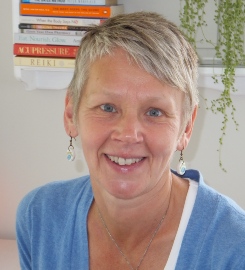Self-Compassion
Dr. Kristen Neff is a professor at the University of Texas at Austin. She conducts research into self-compassion. According to Neff, there are three elements of self-compassion:
- Self kindness – the capacity to be warm and understanding of ourselves when we suffer or fail, rather than being critical of ourselves or ignoring our pain.
- Common humanity – the capacity to recognise that suffering is part of our shared, universal experience and not something that only happens to “me”.
- Mindfulness – the capacity to create a sense of balance in relation to our felt experience. To neither exaggerate nor ignore what we feel and think but allow what is present to be felt.
Neff also describes what self-compassion is not. It is not self-pity, which is an immersion in our own feelings and a loss of awareness of our interconnection. It is also not self-indulgence, which is an indulgence of self that may give us short term pleasure and is ultimately depleting, of self and others. She makes an interesting distinction between self-esteem and self-compassion in The Space Between Self-Esteem and Self Compassion. Self-esteem relates to our belief of worth or value. Efforts to increase self-esteem can often take the form of comparison, wanting to be different from or stand out as ‘special’ or better than, which may ultimately be depleting. We feel compassion because our common humanity recognises it as a given, that we deserve understanding.
What are the barriers to self-compassion? The barriers to self-compassion, Neff’s research shows, are self-judgement, isolation and over identification. To practice self-compassion we must first notice or be aware that we are in pain or suffering. If we can be curious and kind about our experience we can learn to lean into, embody and feel it. Once felt we can act with care and regard towards ourselves or ask for support in a way that is affirming. You can find out more about Neff’s work at www.self-compassion.org you can also find out where you lie on the scale of self-compassion, which is a useful way of getting a sense of which element is your strength and where it may serve you to put your attention.
How would it serve you to cultivate more self-compassion?
Positive Regard
How do you regard another the instant your eyes meet? I invite you to be curious and turn your attention there. How we habitually ‘be with’ another in that first moment of meeting impacts, for us and them, particularly when we are speaking in front of an audience. If we dare to gaze into the eyes of our listeners we often see judgement, criticism or ridicule. Most often what we see is what we assume is there and is actually a reflection of our own projection. The judgement, criticism or ridicule lies within us, of ourselves. There are exceptions and most people in an audience want and are ready to see the best in us. Most listeners come from a place of positive regard. The more we notice and allow ourselves to be nourished by our audiences’ positive regard the more we relax, flow and Be who we are. The more we relax and flow the more our audience listens and deepens into their regard. A co-created spiral of positive regard and presence unfolds.
To This Day
To This Day is a short TED Talk by Shane Koyczan, a poet and writer. In it Shane describes his experience of being bullied and being a bully. His talk moves into a poem with animations of the same title. The poem is powerful. A few lines read…
‘… I will love myself despite the ease to which I lean towards the opposite… If you can’t see anything beautiful about yourself get a different mirror. Look a little closer. Stare a little longer. Cause there’s something inside you that made you keep trying. That believed they were wrong…’
-Shane Koyczan
In The Girl Who Looked Into The Mirror, a short fil by Nic Askew, Lisa shares her experience of learning to see and love herself in the mirror of her own awareness and through relationship with others.
How do you lean, towards love of you, or away?
Letting Go of Perfectionism
As a recovering perfectionist I have come to know that compassion is one of the antidotes to and can support us in the process of letting go of perfectionism. When we become more compassionate we can embrace our, and others, vulnerabilities and imperfections. We no longer strive to live and be perfect. Perfectionism is about hustling for approval and acceptance and emerges from the experience of being valued for achievement and performance. We are worthy because of what we do, not who we are. Perfectionism is embedded in the belief that we are what we accomplish and how well we accomplish it.
Leonard Cohen’s song Anthem has a line it that goes, ‘There is a crack in everything. That’s how the light gets in’. The song is a wonderful reminder of the impact of attempting to be perfect, to deny and negate the cracks rather than see the beauty in them, our imperfections.
Compassion and Empathy
In Compassion and the Meaning of Empathy Joan Halifax, who works with people at the last stage of life, in hospice or death row, explores what she has come to understand about compassion. In answer to the question, what is compassion? Halifax says that compassion is the capacity to see clearly into the nature of suffering, to be strong and not separate from suffering and, from this place of being with suffering, transform it. She shares that in her experience not being attached to any outcome matters when we are truly being compassionate. She has come to know that the enemies to compassion are pity and moral outrage.
What happens to you when you see suffering?
Compassion and The Golden Rule
Karen Armstrong is an author known for her writing on comparative religion. In My Wish: The Charter for Compassion Armstrong draws on her knowledge of Christianity, Islam and Judaism to give a moving, warm and engaging talk. In it she makes the point that, at its core, religion is about behaving differently in a committed way. At the centre and across religions compassion is the task of religiosity, led by the Golden Rule, ‘do not do to others what you would not like them to do to you’. She talks about how challenging it can be to act and live from this place, and shares how religion has been ‘hijacked’, and how scriptures have been used to oppress.
What guides how you behave?
Aroha
Compassion is relational. It exists within the context of relationships. From a Maori perspective compassion is embedded in the concept and practice of aroha. Aroha recognises our belonging to the whanau or family of diversity and our relationship to and connection with Papatuanuku, the land. Aroha carries a responsibility to care for and respect all forms of life and living.
Where is the home of your belonging?
Compassion and Tenderness
Krista Tippett is a journalist. In Reconnecting with Compassion she invites us to reclaim compassion as a ‘guiding virtue’. She suggests that there are different components that make up compassion such as Kindness, curiosity without assumption, empathy, forgiveness, presence (being there), beauty and mystery. Unlike, for example, tolerance, Tippett says that compassion is visible and illustrates this with a number of stories. The stories she shares all reveal the quality of tenderness. As she says, “lived compassion brings us back to the window of tenderness.”
One of the stories is about Einstein who recognised that, with the advances of technology we need virtues “humanity needs this technology as much as that has connected us”.
Sounds of Compassion
Listening to mood-congruent music can be more soothing than listening to upbeat music if you are suffering. Here are a few songs that resonate with the core elements of compassion, kindness, common humanity and mindfulness.
- Let It Be by The Beatles invites us to be with ‘what is’.
- REM’s Everybody Hurts reminds us that we are not alone.
- Carrie Manolakos sings about standing In Your Own Grace.
- Benjamin Francis Leftwich’s title song from the film Shine offers compassionate support and in Angel Sarah McLachlan sings about trying to love you.
Quote Corner
Compassion practice is daring. It involves learning to relax and allow ourselves to move gently toward what scares us. – Pema Chodron
The thing that is really hard, and really amazing, is giving up on being perfect and beginning the work of becoming yourself. – Anna Quindlen
Perfectionism didn’t lead to results. It led to peanut butter. – Brene Brown
If you want others to be happy, practice compassion. If you want to be happy, practice compassion. – Dalai Lama
References
Karen Armstrong. My Wish: The Charter for compassion
Nic Askew. The Girl Who Looked into the Mirror.
Brene Brown (2010). The Gifts of Imperfection. Hazelden.
Chan Jean Lee, Eduardo B. Andrade, and Stephen E. Palmer (2013). Interpersonal Relationships and Preferences for Mood-Congruency in Aesthetic Experiences. Journal of Consumer Research, August 2013
Pema Chodron (2002). The Places that Scare You. Shambhala Books.
Joan Halifax https://www.ted.com/talks/joan_halifax
Shane Koyczan. To This Day
Dalai Lama (1998). The Art of Happiness. A Handbook for Living. Riverhead Books.
Kirsten Neff. http://self-compassion.org/
Anna Quindlen (2005). Being Perfect. Random House.
Krista Tippett. Reconnecting with Compassion
Article posted 25 September 2015

Sally Forman
Sally is a Certified Hakomi Therapist, Psychotherapist, Professional Certified Coach and Speaking Circles Facilitator, in private practice in Central Otago.


